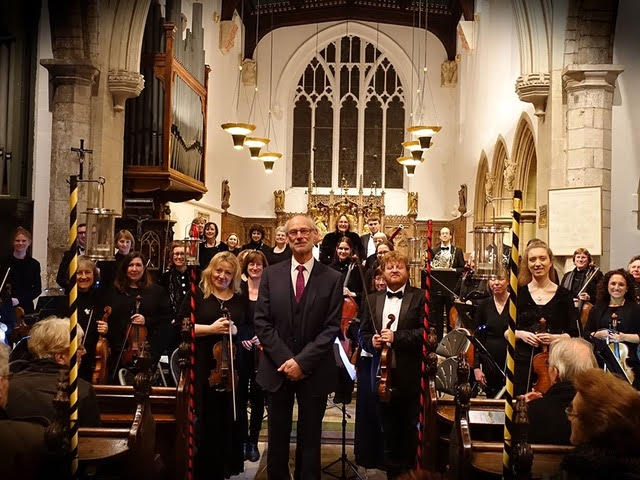
Conductor Alan George and the Academy of St Olave’s at St Olave’s Church, Marygate, York
A MUSICAL heart attack announced the Allegro giocoso opening of Carmen’s prelude to Act I.
The stately march – a striking Spanish-style fanfare – was splendidly led by the trumpets. Really fine flute and clarinet decorations added to the festive atmosphere. The violins – a tad fewer than usual – relished the main ‘toreador’ rhythmic drive.
The transition to the slower, darker Andante moderato was pretty seamless. Here the standout performer was Alexandra Nightingale(oboe), who clearly relished the famous ‘fate’ solo.
The clarinet, bassoon, and low strings contributed prominent supporting figures, giving the oboe’s solo a rich, smoky atmosphere. Talking of seamless, I didn’t realise I was listening to the Strauss Kaiser-Waltzer until my foot started tapping – silently, obviously.
Standouts: a lovely cello solo (Rachel Brown) gently echoed by Mark Sykes on horn, briefly joined by Becky Jobling on flute, creating a chamber-music intimacy.
The second half belonged to Sibelius and his magnificent Symphony No. 7 in C major. Despite the sectional outline in the programme notes: Adagio – Vivacissimo – Adagio – Allegro molto etc., this is a continuous single-movement work with no breaks.
It is the challenge of the conductor to ensure a sense of organic growth rather than a patchwork of varied tempo changes, and Alan George did just that.
The opening Adagio sets the tone with the cellos and violas beginning the long, slowly ascending scale that generates the symphony’s opening sustained sonority.
They were joined by the violins, which brightened the musical atmosphere: this gradual unfolding set the symphony’s sense of organic growth. To be sure, greater string numbers would have given more body to the sound— the string section is the continuous living fabric of the symphony— but the playing was nevertheless very good and effective.
There were lovely lyrical flute, oboe and clarinet (Lesley Schatzberger) contributions, as well as prominent calls, responses and climactic fanfares from Mark Sykes (horn) and Tom Taylor (trumpet). But it was the three trombone solos that could be said to form the backbone of the work— each appearance more majestic than the last— and James Stockwell’s performance was very good indeed.
Carl Nielsen’s Concerto for Flute and Orchestra (1926), like the Sibelius Symphony, is a single continuous movement lasting approximately 20 minutes. However, the Concerto falls naturally into two large sections separated by a brief pause.
A short, gentle string opening gives way to the flute’s first cadenza-like entrance: lyrical but with sudden leaps and quirky turns. The rapid staccato and brilliant arpeggio passages gave flautist Becky Jobling a chance to display her obvious technical prowess, while the plaintive, cantabile melody in the central poco adagio section was played beautifully.
I don’t usually associate humour with the music of Carl Nielsen, but the ‘military’ side drum exchanges eliciting playful trills and unexpected pauses were indeed quite witty.
But this is a flute concerto, and in the closing faster section we had the necessary virtuoso fireworks – fast tonguing passages, huge leaps, duets – more like duels – with both brass and percussion. The closing sign-off, featuring a solo cadenza and a muted, poetic “that’s all for now, folks,” was priceless.
What really struck me when listening to this splendid performance was the spectre of Igor Stravinsky and Petruska in particular. Nielsen’s concerto isn’t (obviously) imitation, but it shares Stravinsky’s love of rhythmic asymmetry, lean chamber-style orchestration and sudden colour changes, giving the Flute Concerto a modern, unsentimental brilliance.
Review by Steve Crowther
